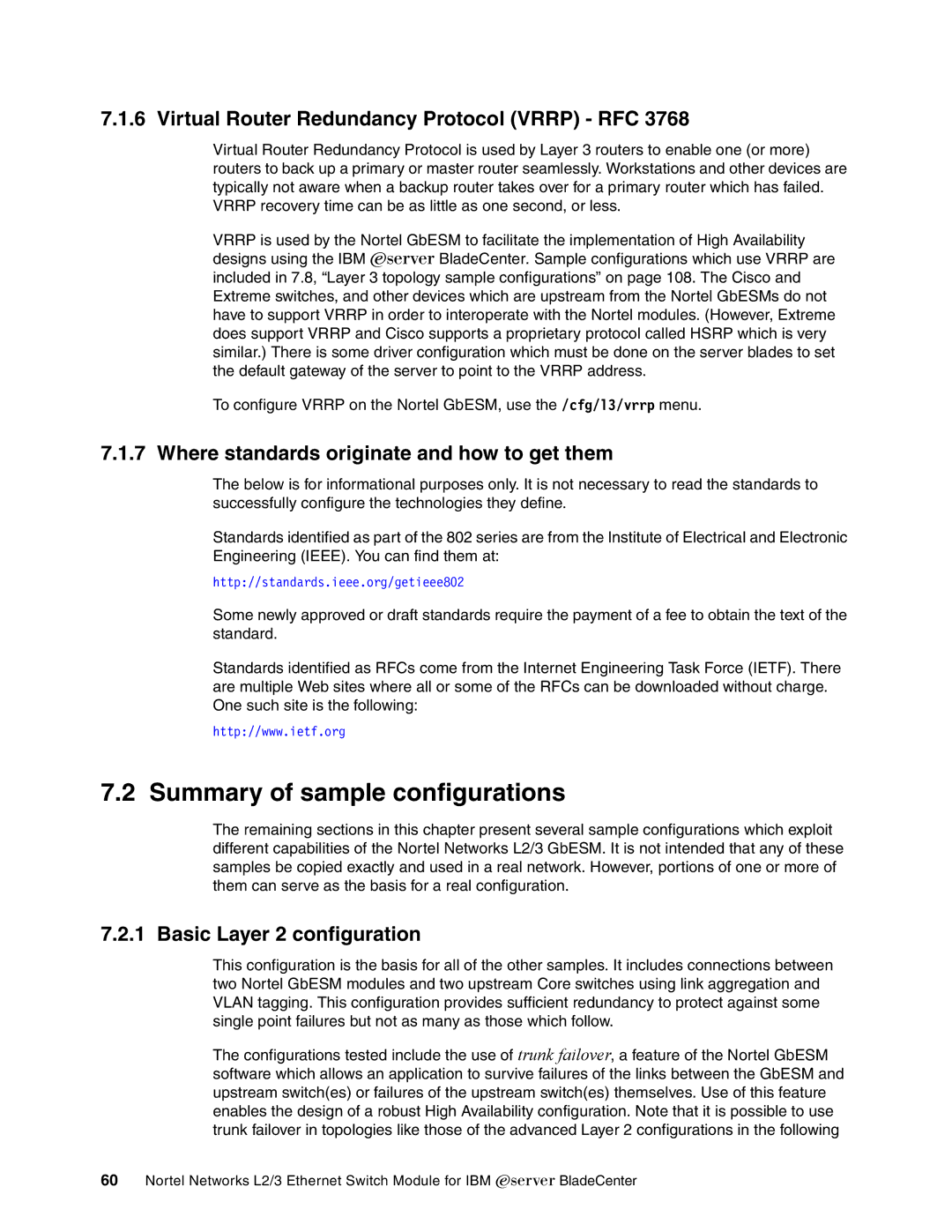7.1.6 Virtual Router Redundancy Protocol (VRRP) - RFC 3768
Virtual Router Redundancy Protocol is used by Layer 3 routers to enable one (or more) routers to back up a primary or master router seamlessly. Workstations and other devices are typically not aware when a backup router takes over for a primary router which has failed. VRRP recovery time can be as little as one second, or less.
VRRP is used by the Nortel GbESM to facilitate the implementation of High Availability designs using the IBM Eserver BladeCenter. Sample configurations which use VRRP are
included in 7.8, “Layer 3 topology sample configurations” on page 108. The Cisco and Extreme switches, and other devices which are upstream from the Nortel GbESMs do not have to support VRRP in order to interoperate with the Nortel modules. (However, Extreme does support VRRP and Cisco supports a proprietary protocol called HSRP which is very similar.) There is some driver configuration which must be done on the server blades to set the default gateway of the server to point to the VRRP address.
To configure VRRP on the Nortel GbESM, use the /cfg/l3/vrrp menu.
7.1.7 Where standards originate and how to get them
The below is for informational purposes only. It is not necessary to read the standards to successfully configure the technologies they define.
Standards identified as part of the 802 series are from the Institute of Electrical and Electronic Engineering (IEEE). You can find them at:
http://standards.ieee.org/getieee802
Some newly approved or draft standards require the payment of a fee to obtain the text of the standard.
Standards identified as RFCs come from the Internet Engineering Task Force (IETF). There are multiple Web sites where all or some of the RFCs can be downloaded without charge. One such site is the following:
http://www.ietf.org
7.2 Summary of sample configurations
The remaining sections in this chapter present several sample configurations which exploit different capabilities of the Nortel Networks L2/3 GbESM. It is not intended that any of these samples be copied exactly and used in a real network. However, portions of one or more of them can serve as the basis for a real configuration.
7.2.1 Basic Layer 2 configuration
This configuration is the basis for all of the other samples. It includes connections between two Nortel GbESM modules and two upstream Core switches using link aggregation and VLAN tagging. This configuration provides sufficient redundancy to protect against some single point failures but not as many as those which follow.
The configurations tested include the use of trunk failover, a feature of the Nortel GbESM software which allows an application to survive failures of the links between the GbESM and upstream switch(es) or failures of the upstream switch(es) themselves. Use of this feature enables the design of a robust High Availability configuration. Note that it is possible to use trunk failover in topologies like those of the advanced Layer 2 configurations in the following
60Nortel Networks L2/3 Ethernet Switch Module for IBM Eserver BladeCenter
